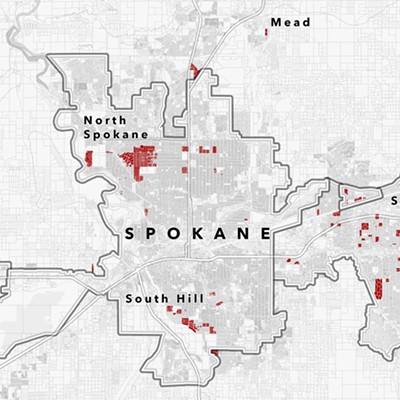The Player
[
{
"name": "Broadstreet - Instory",
"insertPoint": "5",
"component": "25846487",
"requiredCountToDisplay": "5"
},{
"name": "Broadstreet - Instory",
"insertPoint": "10",
"component": "25846487",
"requiredCountToDisplay": "10"
},{
"name": "Broadstreet - Instory",
"insertPoint": "15",
"component": "25846487",
"requiredCountToDisplay": "15"
},{
"name": "Broadstreet - Instory",
"insertPoint": "20",
"component": "25846487",
"requiredCountToDisplay": "20"
}
]
by Marty Demarest & r & & r & Resistance: Fall of Man & r & & lt;span class= "dropcap " & I & lt;/span & t didn't hit me until I was manning a turret gun propped up behind a screen of sandbags, trying to flush a squad of aliens out of a tiny shack. The aliens kept back within the shadows, training their glowing purple buckshot at me every time I revealed my existence with gunshots of my own. A fellow soldier -- a co-op player -- was crawling towards them, dodging behind piles of rubble and cement pillars. As I fired off a round in their direction, I realized that my friend was crawling through a petrol station. If I missed a shot, or failed to distract the aliens, my friend would be blown up. This was, after all, the PlayStation 3.
Resistance had quickly lulled me into a world of hyperreal combat. Between intense skirmishes, I had learned to amuse myself like a nervous soldier with too much ammunition: I shot out window glass, piece by piece, a few fragmentary pixels at a time. I sniped out lighting fixtures that were hanging on walls and then shot the bulb inside, igniting a fountain of blue and white sparks. I took mocking notice of the damage-less blood spatters my gunshots did to my teammate's face. (I would later be grateful for the lack of friendly fire when our weapons started shooting streams of nails that ricocheted around rooms.) But I had not noticed how much the PlayStation 3's computing power would change the entire mood of combat until I realized that the petrol station could explode.
Indeed, the aliens seemed to take notice of my friend at the same time that I saw the situation's explosive possibilities. They directed their blasting his way, and a few wayward shots later, the entire station blew. I watched as the aliens disappeared behind a wall of fluttering flames, then I ducked out from behind my gun and ran to where my friend's body had been tumbled like a rag doll. I could see myself approaching him on his half of the television screen. It was grainy, in black and white with specks like old movie film. Throughout the explosion, not a single jittering moment of lag had marred the flow of combat appearing on either side of the television. The only nod to the frailties of technology was my knee, passing into my friend's torso as I knelt to heal him. Even in Resistance, once you're dead, your pixels don't matter.
THE GOOD: A whole slew of alien life forms can be slain by more than half-a-dozen weapons, but it's a testament to Resistance's excellent combat programming that even by the end of the game, I'm still fighting challenging battles against the basic-model aliens using my standard-issue gun.
THE BAD: Designer Insomniac Games made a wise choice when they brought supercomputer-grade physics and precise calibration to the combat side of a combat game, but it would have been nice to see them make everything else function with as much detail. If they want to include a teeter-totter, it really should totter when a friend and I jump up and down on it with nothing but a soldier's corpse on the other end.
THE BOTTOM LINE: Resistance isn't futile -- it's the future.
Resistance had quickly lulled me into a world of hyperreal combat. Between intense skirmishes, I had learned to amuse myself like a nervous soldier with too much ammunition: I shot out window glass, piece by piece, a few fragmentary pixels at a time. I sniped out lighting fixtures that were hanging on walls and then shot the bulb inside, igniting a fountain of blue and white sparks. I took mocking notice of the damage-less blood spatters my gunshots did to my teammate's face. (I would later be grateful for the lack of friendly fire when our weapons started shooting streams of nails that ricocheted around rooms.) But I had not noticed how much the PlayStation 3's computing power would change the entire mood of combat until I realized that the petrol station could explode.
Indeed, the aliens seemed to take notice of my friend at the same time that I saw the situation's explosive possibilities. They directed their blasting his way, and a few wayward shots later, the entire station blew. I watched as the aliens disappeared behind a wall of fluttering flames, then I ducked out from behind my gun and ran to where my friend's body had been tumbled like a rag doll. I could see myself approaching him on his half of the television screen. It was grainy, in black and white with specks like old movie film. Throughout the explosion, not a single jittering moment of lag had marred the flow of combat appearing on either side of the television. The only nod to the frailties of technology was my knee, passing into my friend's torso as I knelt to heal him. Even in Resistance, once you're dead, your pixels don't matter.
THE GOOD: A whole slew of alien life forms can be slain by more than half-a-dozen weapons, but it's a testament to Resistance's excellent combat programming that even by the end of the game, I'm still fighting challenging battles against the basic-model aliens using my standard-issue gun.
THE BAD: Designer Insomniac Games made a wise choice when they brought supercomputer-grade physics and precise calibration to the combat side of a combat game, but it would have been nice to see them make everything else function with as much detail. If they want to include a teeter-totter, it really should totter when a friend and I jump up and down on it with nothing but a soldier's corpse on the other end.
THE BOTTOM LINE: Resistance isn't futile -- it's the future.
















